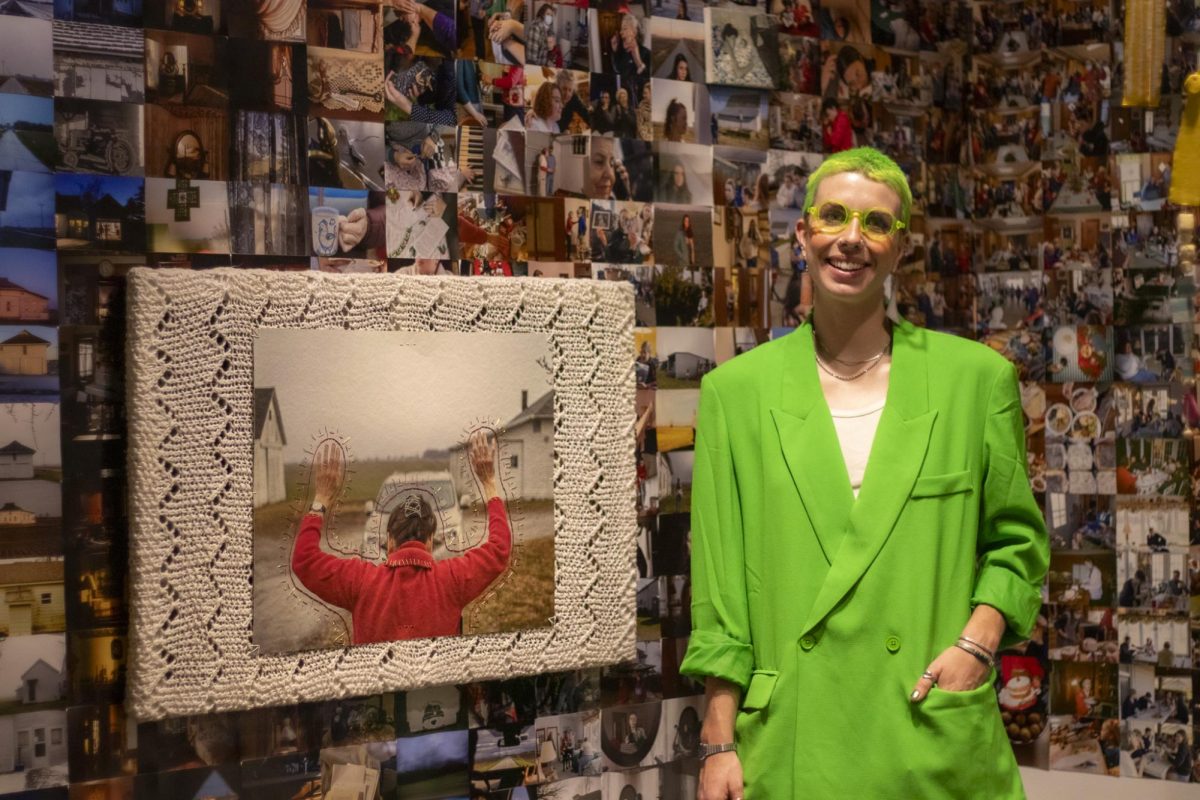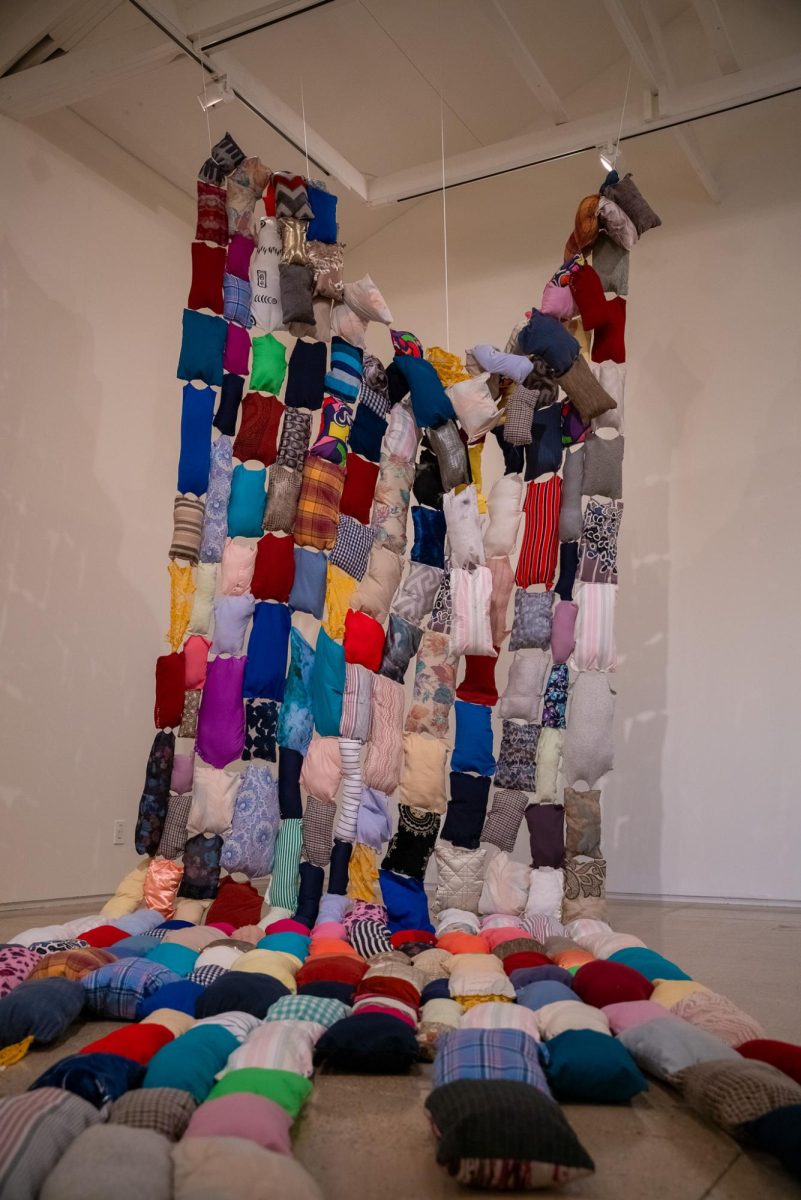One is meant to have a conversation with art. Memories will be invoked. Biases will be shattered. A constant swirl of ideas surrounds the atmosphere of an art exhibit. Space continuously isolates and spurns reflection in “Cultural Bounty: The Beckstead, Lerma and Annala Collection.”
The collection — formed by Alan Craig Beckstead, Daniel Lerma and Steve Alexander Annala — has been in the making since 1998 and was recently curated for UTSA by Arturo Infante Almeida. At its core, the collection serves to educate and build community.
Works such as Gooch’s “Milk Queen, Sisters of Perpetual Indulgence” and “Sister Flora Goodthyme, Sisters of Perpetual Indulgence” delve into the character of gay culture through the portrait of two drag queens.
“Milk Queen, Sister of Perpetual Indulgence” captures the essence of a drag queen with multiple layers of makeup. One layer consists of black contour lines — outlining and obstructing pivotal facial features. “Sister Flora Goodthyme, Sisters of Perpetual Indulgence” covers the eyes and lips of the queen with jewels. The souls and faces of the queens are skewed. Identity becomes further questioned.
Bradley Hart’s “Half Me, Self Portrait (Injection)” pairs nicely with the previously mentioned pieces.Hart’s work comments on a partially formed identity while the other half remains unknown. Hart masterfully comments on the half-formed identity as being the result of outside forces by creating the portrait using bubble wrap injected with oil paint.
Jamie Vasta’s “Giuditta e Oloferne, 1599” and “Graffiti on the Rocks, Glen Park” employ oil and glitter to underscore the mightful nature of beauty to hide pain. Both works immediately catch one’s eye due to their shiny nature. One may stare at the pieces in awe for quite some time before noticing their embellishments.
“Giuditta e Oloferne, 1599” focuses on a murder scene. Due to the glimmering glitter, the knife is not instantly recognizable. “Graffiti on the Rocks, Glen Park” paints a heavenly landscape. Its allure is heightened by the shimmering glitter. As the name suggests, there is graffiti on the rocks. The pieces beg the viewer to take a closer look before becoming entrapped by the false beauty created by the glittery material.
Place became the center for Raul Rene Gonzalez’s “O’Banion’s Car Wash.” Gonzalez utilizes the medium of pen on paper to create indistinct contour lines — imitating the fuzziness of memory. Within this work, Gonzalez does not focus on an elaborate background, which allows the piece to exist outside of time and space. The experience of the car wash is at the forefront rather than the location.
The two themes of embodiment and place come together in Nebojsa Zdravkovic’s “Peeling the Orange.” The image depicts the male body in the nude while peeling an orange through vibrant colors and heavy brushstrokes. Zdravkovic creates the sense of a bursting memory with brushstrokes demonstrating the immediacy to conjure up the image. The oil on canvas painting is fascinated with the male body and the might of reflection upon even the most mundane experience.
With the collection “Cultural Bounty: The Beckstead-Lerma-Annala Collection,” Almeida curates an artistic experience focused on the importance of reflection and identity. The collection often does so through an examination of LGBTQ+ stories — the result of Beckstead acquiring much of the art while volunteering at AIDS foundations and nonprofits.
Throughout the exhibit, one may track the evolving identity of San Antonio through time. The tribulations of love and loss infuse the exhibit with a lonesome nature. The pieces often involve a single figure, sometimes fragmented or discombobulated.
Most striking is the absence of object within portraits — specifically the missing skateboard within Sandow Birk’s “Nollie Nose Grind (Skater #3).” With many of the pieces having a heavy focus on negative space, the collection beckons viewers to ponder the unknown and the absent shine through in this brilliant exhibit.
The collection will continue to be on display at the Russell Hill Rogers Galleries — located at 1201 Navarro St. — until Nov. 2. This exhibit is free to UTSA students. For more information, check out the exhibit’s web page.










